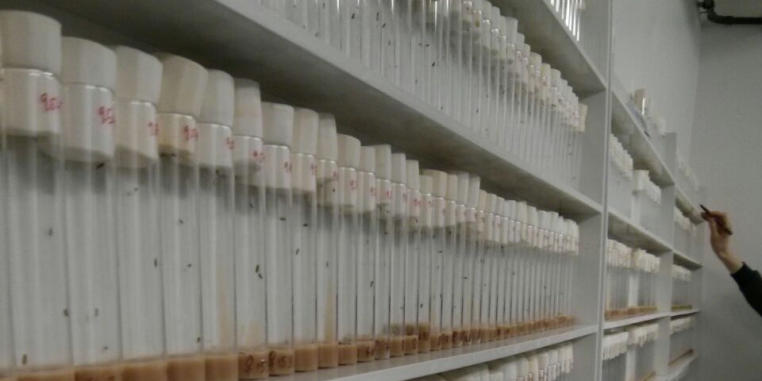
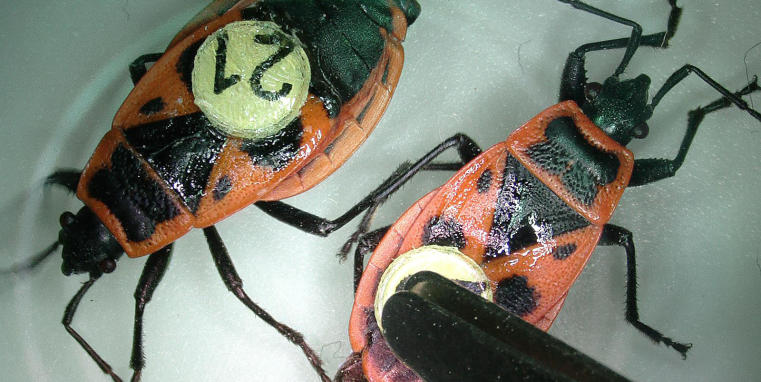
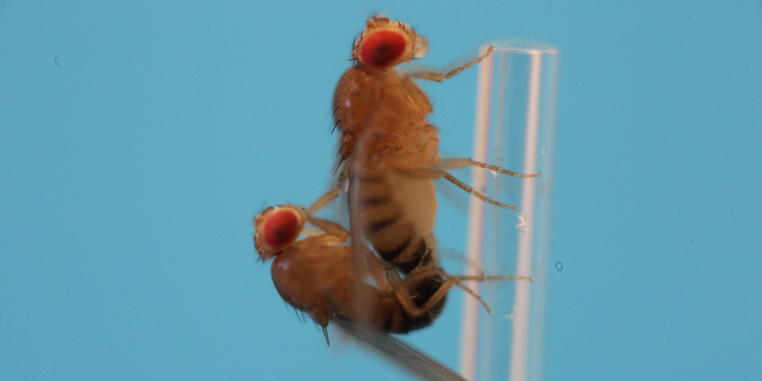
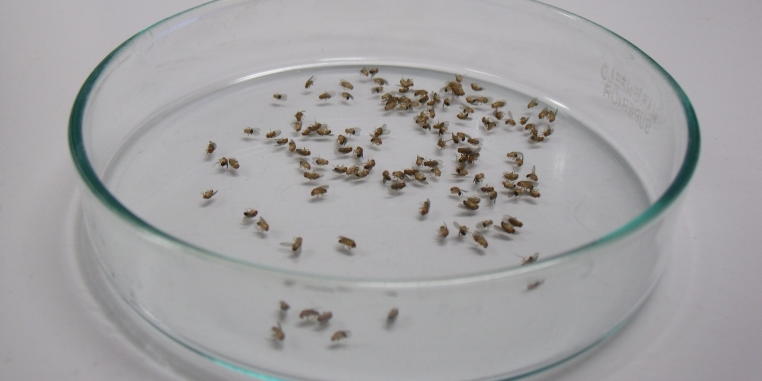
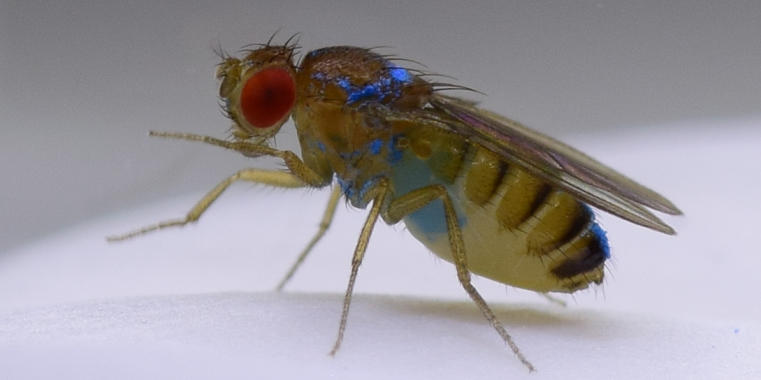
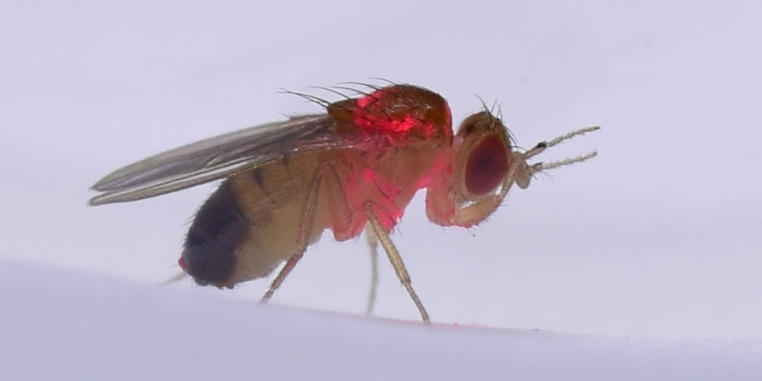
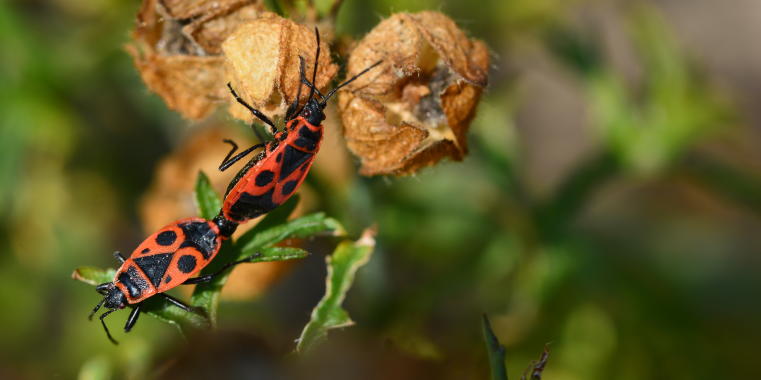







Males and females often show striking differences in their morphology, physiology and behaviour. With my research I aim at understanding how males and females differ and how these differences evolved. I am particularly interested in sexual selection and sexual conflict. Sexual conflict can occur when the evolutionary interests of males and females over shared traits like mating rate differ, causing opposing selection pressures on the two sexes. Sexual conflict is predicted to cause rapid change and to ultimately cause speciation as it directly alters sexual traits that can contribute to reproductive isolation.
I study reproductive traits using mainly Drosophila melanogaster fruit flies, but have also used other insect species in the past. Fruit flies are particularly amenable to this type of work as their entire genome is described and there are plenty of molecular tools do study the function of single genes. I use a range of methods from artificial selection experiments to behavioural assays to study different aspects of male – female mating interactions in the laboratory.
We are currently working on the following four topics. If they catch your interest and you would like to work with us, please contact us for further questions.
Together with Sophie Armitage at the Freie Universität Berlin and Sergio Ávila Calero we want to understand the tight link between mating and immunity. It is commonly observed that mating triggers antimicrobial gene expression in females, but this often does not translate into a better protection against infections. Hence, why do males trigger antimicrobial expression and what if any are the benefits? If there are not benefits to females, could it only benefit males instead, but what are those? We investigate these questions in this project.
As a second aspect, we study an exclusive male antimicrobial peptide, the andropin. This antimicrobial peptide can only be found in the male reproductive tract and it is transferred to the female at mating. Why, is an unresolved questions and we here want to tackle it.
This recently funded DFG project aims at understanding the effects of elevated temperatures on male reproductive capacity. We are well aware that spermatogenesis is temperature sensitive and when encountering detrimental temperatures this should negatively affect population fitness and persistence. However, there is a severe lack of data investigating the direct link between individual reproductive performance and fitness under rising temperatures and with the help of Berta Canal Domenech, we want to contribute to increasing our understanding whether animals can evolve to maintain their reproductive capacities even under raising temperature.
Also female fecundity is potentially affected by extreme temperatures as changes in ovariole number with temperature have been reported, but this occurs at much higher temperatures as those that affect male reproduction. Hence, males are expected to be the limiting factor. As successful reproduction is essential for adaptation to changing environments and species persistence, I think it is of crucial importance to study the evolution of reproductive traits in response to increasing temperatures.
We plan to study the molecular basis of the reported sensitivity of spermatogenesis to temperature stress in Drosophila. We will combine experimental evolution with next generation sequencing and proteomics approaches to investigate the evolvability of male fecundity or potential constrains thereof in flies exposed to rising temperatures. At the heart of this research project is a set of experimental evolution lines to test whether evolvability in reproductive traits limits or facilitates adaptation to novel thermal regimes. By imposing a realistic thermal regime on a set of selection lines designed to mimic predictions of expected increases in temperature we plan to track the evolution of female fecundity and male fertility.
This project received support as part the NC3 special research program between the Universities of Bielefeld and Münster. The overarching goal is to investigate the three aspects (niche conformance, niche choice and niche construction) through which an individual interacts with its niche to maximise its fitness. Within this framework, Laura Japke will study how the developmental environment shapes adult phenotypes with a focus on reproduction. Increased larval density signals the presence of many conspecifics and males as well as females show developmental plasticity in response. We assume this developmental plasticity prepares adults for high, respective low reproductive competition and that this anticipation is beckoned by larval density. We are interested in understanding the short- and long-term consequences of adults conforming to their expected niche as signalled during the larval phase.
As part of the second phase of the Research Unit ‘Sociality and the reversal of the fecundity-longevity trade-off’ (FOR 2281) Daniel Pritchard and I will provide the outgroup data for a non-social insect to understand how social insects manage to combine great fecundity with a long lifespan. Most animals can either maximize one or the other, i.e. produce many offspring at the expense of a shortened lifespan. How do social insects forgo this otherwise often observed trade-off between these two life-history traits?
As part of this research unit, we will contribute the power available through the Drosophila melanogaster genetic toolbox and test candidate genes identified in social species during the first funding phase for their effects on lifespan and fecundity on the non-social model. The aim is to compare the effects of candidate genes on longevity and fecundity in social versus our non-social insect to understand the genetic basis of this trade-off. A synthesis will provide insight whether the same genes/pathways are involved and were co-opted by social insects to fulfill novel functions or whether there is a fundamental difference between social and non-social insects.